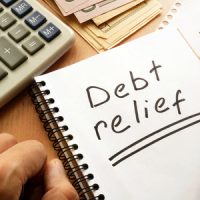Three Strategies for Prioritizing Debt Repayment

If you are living paycheck to paycheck, then you may have gone through the stressful routine of figuring out which bills you can afford to pay on time and which ones will have to wait until your next paycheck comes in. Of course, now that you have a small surplus in your budget every month, you face a different dilemma. The only local use for the extra money is to pay down debts, but since you only have an extra $50 or so per month left to pay once you have paid all your current bills, including minimum payments on outstanding debts, which debt do you pay it toward? Economists would tell you that there is a simple answer to this question, but in fact, not everyone’s priorities are the same. For help making the most out of your new glimmer of hope about getting out of debt, contact a Philadelphia debt relief lawyer.
The Snowball Method: Building Motivation and Momentum
The snowball method is where you put the extra money toward paying down the debt with the lowest outstanding balance while making minimum payments on the others. That means that you can focus on paying off one of your credit cards or the BNPL debt you racked up during the pandemic, rather than something huge like your car loan or mortgage. This method enables you to see your debt balances shrink quickly, and before long, there will be one fewer debt in your budget. By this time next year, you will have an extra $80 in your budget to put toward your next smallest debt.
The Avalanche Method: Saving the Most Money on Interest
Economists would tell you that the avalanche method is the only one that makes sense. In this method, you put your extra money toward paying off the debt with the highest interest rate because, the more you pay down the principal this month, the less interest will accrue next month. Meanwhile, you make the minimum payments on all your other debts. Once you pay off the first debt, you move onto the debt with the next highest interest rate.
The Long View: Pay Off What You Can’t Discharge in Bankruptcy
The avalanche method and the snowball method assume that your income will remain about the same for the foreseeable future, but as every gig worker and everyone who has suffered an unexpected illness knows, nothing is certain. Based on this, it makes sense to prioritize the debts that you would still owe even if you filed for bankruptcy protection. By this logic, you should put your budget surplus toward tax debt, court-ordered fines, and overdue child support. If things take a turn for the worse, you can discharge the other debts in bankruptcy.
Contact Louis S. Schwartz About Debt Repayment Strategy
A Philadelphia consumer law attorney can help you decide which debts you can pay down and which ones you must settle or discharge. Contact Louis S. Schwartz at CONSUMERLAWPA.com to set up a free, confidential consultation.
Source:
ownyourfuture.vanguard.com/content/en/learn/financial-planning/how-should-i-prioritize-paying-off-my-debt.html


